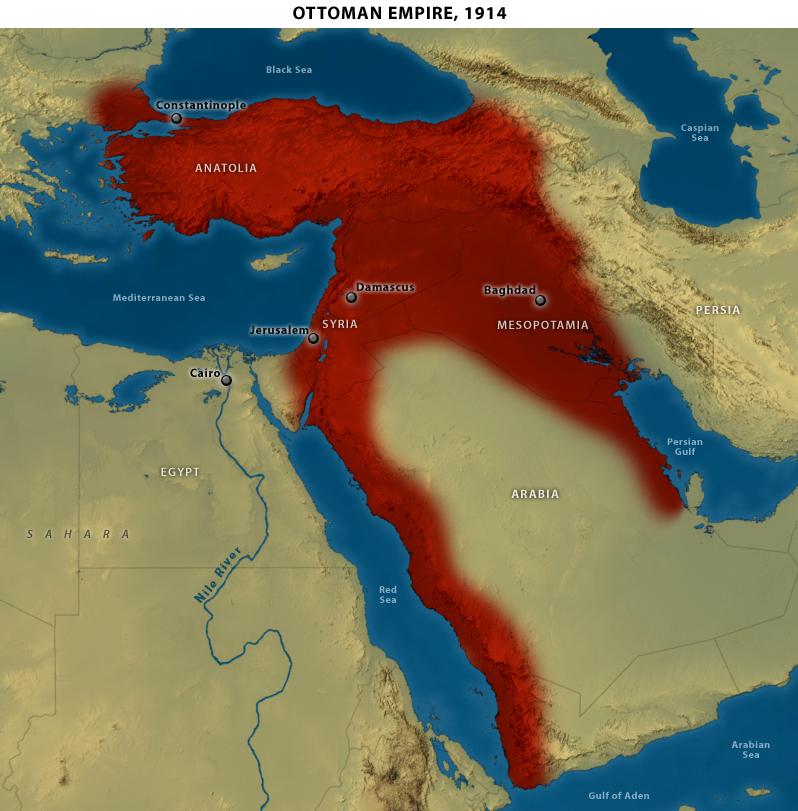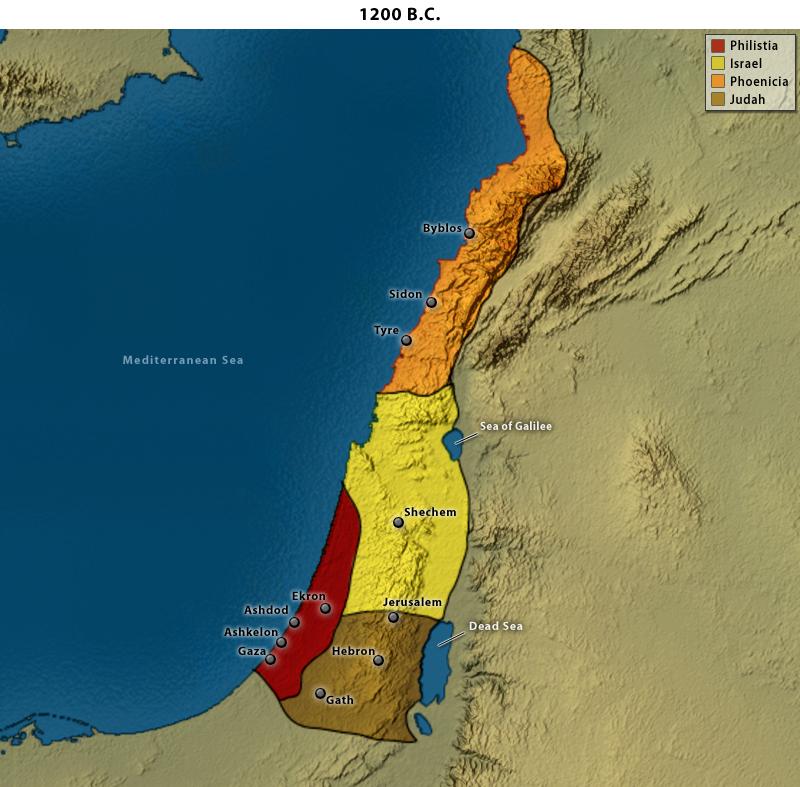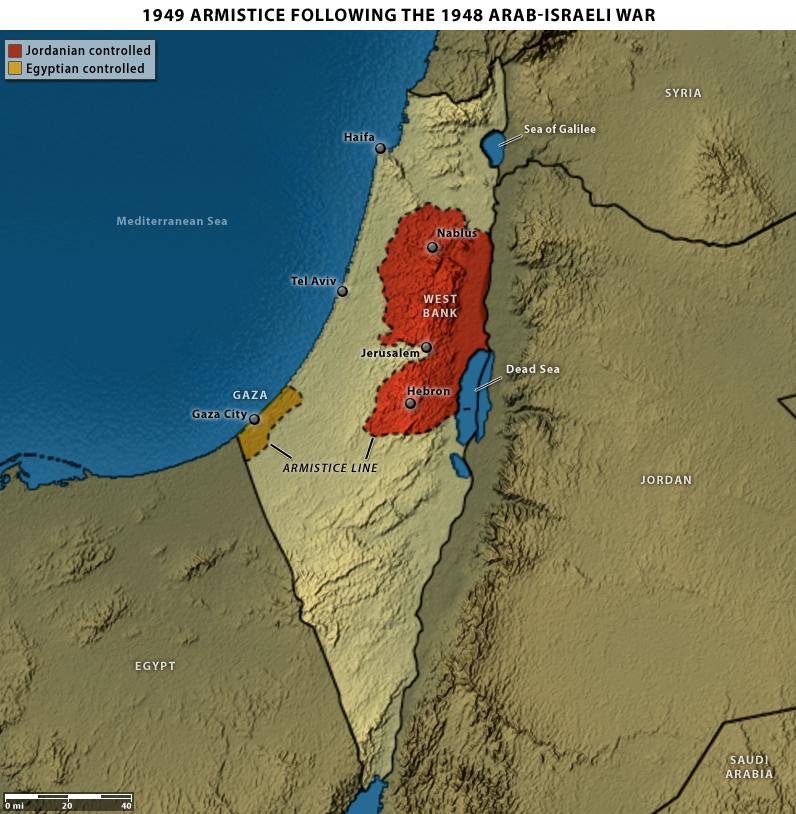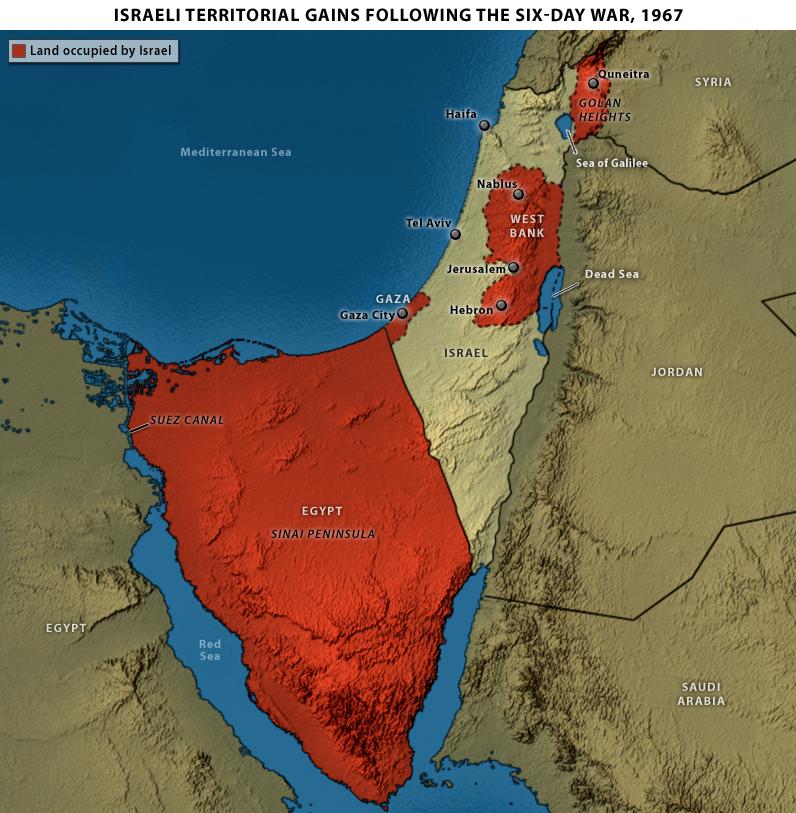While in part 1 we looked at the geostrategic problems of Israel, in the case of the Palestinians the story begins with
the Ottoman Empire, which controlled the Middle East from 1517 to 1918, when
World War I ended. The Ottomans divided the Middle East into provinces, one of
which was Syria. Under the Ottomans, the Syria province encompassed what is
today Syria, Lebanon, Jordan and Israel. Constantinople (Istanbul), the Ottoman
seat, sided with the Germans in World War I. As a result, after the war the
victorious British and French dismantled the Ottoman Empire, and the province
of Syria came under British and French rule. Under a secret wartime
French-British deal, known as the Sykes-Picot agreement, the province was
divided on a line running from Mount Hermon due west to the sea. The area to
the north was placed under French control; the area to the south was placed under
British control.

The French region was further subdivided. The French
had been allied with the Maronite Christians during a civil war that raged in
the region in the 1860s. Paris owed them a debt, so it turned the predominantly
Maronite region of Syria into a separate state, naming it Lebanon after the
dominant topographical characteristic of the region, Mount Lebanon. As a state,
Lebanon had no prior reality, nor even a unified ethno-sectarian identity; its
main unifying feature was that demographically, it was dominated by French
allies.
The British region
also was divided. The Hashemites, who ruled the western Hejaz region of the
Arabian Peninsula, had supported the British, rising up against the Ottomans.
In return, the
British had promised to make them rulers of some sort
of Arabian Empire after the war. But in addition to the Hashemites, London
was also allied with the French and with other tribes against the Ottomans, and
thus could not make the Hashemites the unquestioned rulers of all of Arabia
(the Peninsula as well as the Levant). Furthermore, the Sauds
in 1900 had launched the reconquest of Arabia from Kuwait, and had gained
control over the eastern and central parts of the peninsula. By the mid-1920s,
the Hashemites lost control over the peninsula to the Sauds,
paving the way for the eventual creation of Saudi Arabia.

But by then the
British had moved the Hashemites to an area in the northern part of the
peninsula, on the eastern bank of the Jordan River. Centered around the town of
Amman, they named this protectorate carved from Syria “Trans-Jordan,” as in
“the other side of the Jordan River,” since it lacked any other obvious
identity. After the British withdrew in 1948, Trans-Jordan became contemporary
Jordan. The Hashemites also had been given another kingdom, Iraq, in 1921,
which they lost to a coup by Nasserist military officers in 1958.
West of the Jordan
River and south of Mount Hermon was a region that had been an administrative
district of Syria under the Ottomans. It had been called “Philistia” for the
most part, undoubtedly after the Philistines whose Goliath had fought David
thousands of years before. Names here have history. The term Filistine eventually came to be known as Palestine, a name
derived from ancient Greek — and that is what the British named the region,
whose capital was Jerusalem.

Significantly, while
the people of this area were referred to as Palestinians, a demand for a
Palestinian state was virtually nonexistent in 1918. The European concept of
national identity at this time was still very new to the Arab region of the
Ottoman Empire. There were clear distinctions in the region, however. Arabs
were not Turks. Muslims were not Christians, nor were they Jews. Within the
Arab world there were religious, tribal and regional conflicts. For example,
there were tensions between the Hashemites from the Arabian Peninsula and the
Arabs settled in Trans-Jordan, but these were not defined as tensions between
the country of Jordan and the country of Palestine. They were very old and very
real, but were not thought of in national terms.
European Jews had
been moving into this region under Ottoman rule since the 1880s, joining
relatively small Jewish communities that had existed there (and in most other
Arab regions) for centuries. The movement was part of the Zionist movement,
which — motivated by European definitions of nationalism — sought to create a Jewish
state in the region. The Jews came in small numbers, settling on land purchased
for them by funds raised by Jews in Europe. Usually, this land was bought from
absentee landlords in Cairo and elsewhere who had gained ownership of the land
under the Ottomans. The landlords sold the land out from under the feet of Arab
tenants, dispossessing them. From the Jewish point of view, this was a
legitimate acquisition of land. From the tenants’ point of view, this was a
direct assault on their livelihood and eviction from land their families had
farmed for generations. And so it began first as real estate transactions,
winding up as partition, dispossession and conflict after World War II and the
massive influx of Jews after the Holocaust.

As other Arab regions
became nation-states in the European sense of the word, their views of the
region developed. Those who adopted the Syrian identity, for example, saw
Palestine as an integral part of Syria, much as they saw Lebanon and Jordan.
They saw the Sykes-Picot agreement as a violation of Syrian territorial
integrity, and opposed the existence of an independent Jewish state for the
same reason they opposed Lebanese or Jordanian independence. Elements of
Pan-Arab nationalism and Islamic identity informed this Syrian view, but they
were not the key factors behind it. Rather, the key factor was the view that
Palestine was a province of the sovereign entity known as Syria, and those we
call Palestinians today were simply Syrians. The Syrians have always been
uncomfortable with the concept of Palestinian statehood — though not with the
destruction of Israel — and actually invaded Lebanon in the 1970s to destroy
the Palestine Liberation Organization (PLO) and Fatah.
The Jordanian view of
the Palestinians was even more uncomfortable. The Hashemites were very
different from the region’s original inhabitants. After the partition of the
British-administered Palestine in 1948, Jordan took control of the West Bank
and East Jerusalem. But there were deep tensions with the Palestinians, and the
Hashemites saw Israel as a guarantor of Jordanian security against the
Palestinians. They never intended an independent Palestinian state (they could
have granted it independence between 1948 and 1967), and in September 1970,
they fought a bloody war against the Palestinians, forcing the PLO out of
Jordan and into Lebanon. The Jordanians remain very fearful that the last
vestige of the Hashemite monarchy could collapse under the weight of
Palestinians in the kingdom and in the West Bank, paving the way for a
Palestinian takeover of Jordan.

The Egyptians also have
been uncomfortable with the Palestinians. Under the monarchy prior to the rise
of Gamal Abdul Nasser in 1952, Egypt was hostile to Israel’s creation. But when
the Egyptian army drove into what is now called Gaza in 1948, Cairo saw Gaza as
an extension of the Sinai Peninsula — as it saw the Negev Desert. It viewed the
region as an extension of Egypt, not as a distinct state.
Nasser’s position was
even more radical. He had a vision of a single, united Arab republic, both
secular and socialist, and thought of Palestine not as an independent state but
as part of this United Arab Republic (which actually was founded as a
federation of Egypt and Syria from 1958 to 1961). Yasser Arafat was in part a
creation of Nasser’s secular socialist championing of Arab nationalism. The
liberation of Palestine from Israel was central to Arab nationalism, though
this did not necessarily imply an independent Palestinian republic.
Arafat’s role in
defining the Palestinians in the mind of Arab countries also must be understood.
Nasser was hostile to the conservative monarchies of the Arabian Peninsula. He
intended to overthrow them, knowing that incorporating them was essential to a
united Arab regime. These regimes in return saw Arafat, the PLO and the
Palestinian movement generally as a direct threat.

Palestinian
nationalism represented a challenge to the Arab world as well: to Syrian
nationalism, to Jordanian nationalism, to Nasser’s vision of a United Arab
Republic, to Saudi Arabia’s sense of security. If Arafat was the father of
Palestinian nationalism, then his enemies were not only the Israelis, but also
the Syrians, the Jordanians, the Saudis and, in the end, the Egyptians as well.
Update: Paris Peace
Conference redux 15 Jan.2017
For updates
click homepage here